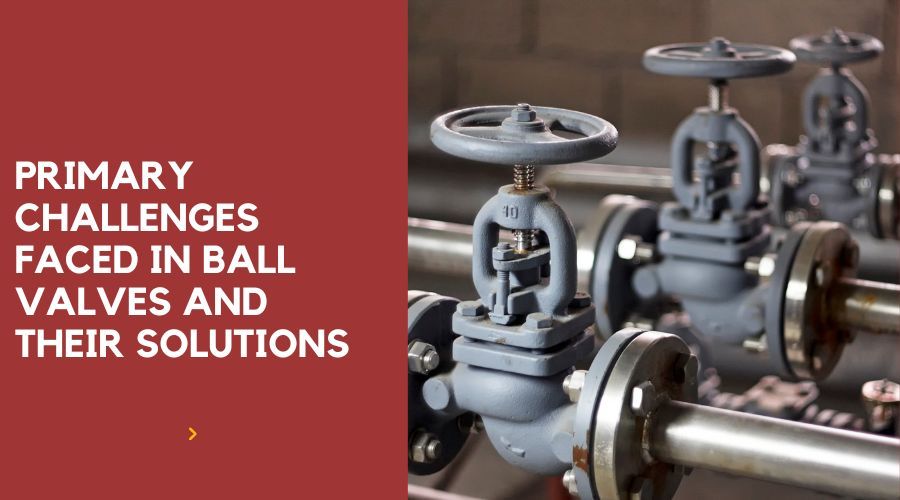
Industries and domestic users face some common problems which are not easily detected. Only a good plumber or an experienced professional can find the flaws inside the metal seat ball valves or, in general, ball valves. However, if you want to find out the main cause of these problems, there are some smart ways. These components are generally available in the market, but if you are going to purchase them, there might be a reason for that. Something might have damaged them too early, which has increased your cost of purchase or maintenance. Before you purchase some new pieces of metal seat ball valves, we want you to look at these common challenges faced by people in the industrial and domestic sectors. We have also provided solutions to them.
Since many types of liquids and gases are supplied through ball valves, which makes them prone to corrosion, normally, the water supply causes corrosion inside the ball valves, which causes rust buildup inside the valve. As a result, they start getting jammed and even leak liquid and gas because of that. Know that corrosion can damage metal, and it can make pores inside the metal, which causes leakage. This corrosion is very common with metal valves, and it slowly deteriorates their surface in a short time. This happens when there is no or little protective layering on these metals. If there is a problem like that in the ball valves, you need to take some steps to take care of this problem.
Use protective coating or anti-corrosive chemicals to protect metal seat ball valves. Since different types of materials can resist different types of fluids, choose the right type wisely. There are different materials like brass, stainless steel, carbon steel, PVC, and copper for these valves. However, some corrosion can take place even if you choose the right material. The reason is moisture, which can cause external corrosion to metal valves. Cover or coat the valves with anti-corrosive chemicals for that.
A flow rate problem is when the pressure either drops or increases unevenly. It happens when the metal seat ball valves are not used as per the size of the pipe. The logic is simple, where a larger size of valve than the size of a pipe will reduce the pressure of liquid or gas. This means the waste of flow will take place, and a flow rate problem will occur. In this case, whatever you are passing through the metal seat ball valve is not going to have a steady flow.
Another issue occurs when a smaller size of the valve is used, which causes additional pressure on the valve. In detail, if the liquid is passed through a large pipe to a small valve, the pressure will accumulate inside the valve. This will create a situation like a bottleneck, which means that there will be too much pressure on the metal seat ball valve.
To avoid this problem, the right size of metal seat ball valve needs to be used. Measure the pipe and valve diameter to get the right size fittings. This means you will be able to control the flow rate problem.
Some components are supposed to be inside machines to reduce friction, which is why they are replaceable. In ball valves, there are seats and seals, which reduce friction. They keep the balance of the ball for an equal flow of liquid and gas. But after some time, you may experience a drop in pressure or friction in the ball valve. That is the sign of worn-out seats, which are made of PTFE material. This material wears out after some time or early in harsh operating conditions.
Always inspect these components for replacement. If they are not providing efficiency in the ball valves, they might be worn out already. The reason is that the seats and seals are made of PTFE or Teflon and rubber, respectively. They are cheap, and you can easily replace them to restore the lost performance of ball valves.
Sometimes even metal gives up in extreme temperatures. Some metals like brass and copper can not withstand high temperatures on a consistent basis, unlike stainless steel and carbon steel. If ball valves are installed where the temperature is more than the usual limit, the performance will start to drop. You can notice it when you do the regular inspection.
To eliminate any chance of a problem like that, you need to use ball valves of more robust materials like stainless steel and carbon steel. Just in this case, you need to use these metals because performance can not be compromised. You can apply insulating coating on the valves if you can not replace them. Insulation will help them survive longer than usual. This will also prevent any further damage in the future.
Just like corrosion, there is another problem, which is the accumulation of debris. Some harsh liquids and chemicals can leave particles inside the valves, which starts reducing the performance. It happens when no maintenance is done for a long time. This debris can jam the metal ball, and it leaves the pressure uneven most of the time.
To resolve this matter, you need to properly clean the ball valves on a regular basis. When there is proper and consistent cleaning of metal seat ball valves, there will hardly be any risk of debris accumulation inside them. Furthermore, you need to do lubrication inside the valves to prevent any jamming. After cleaning it, ensure lubrication. This will keep the metal ball working accurately, and the control of valves will be precise.
If you are purchasing metal seat ball valves, make sure that you do a complete analysis of their size, diameter, pressure limit, etc. These things also matter in the longevity of valves.